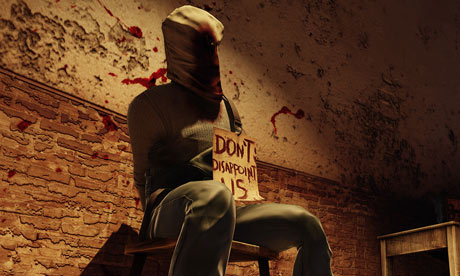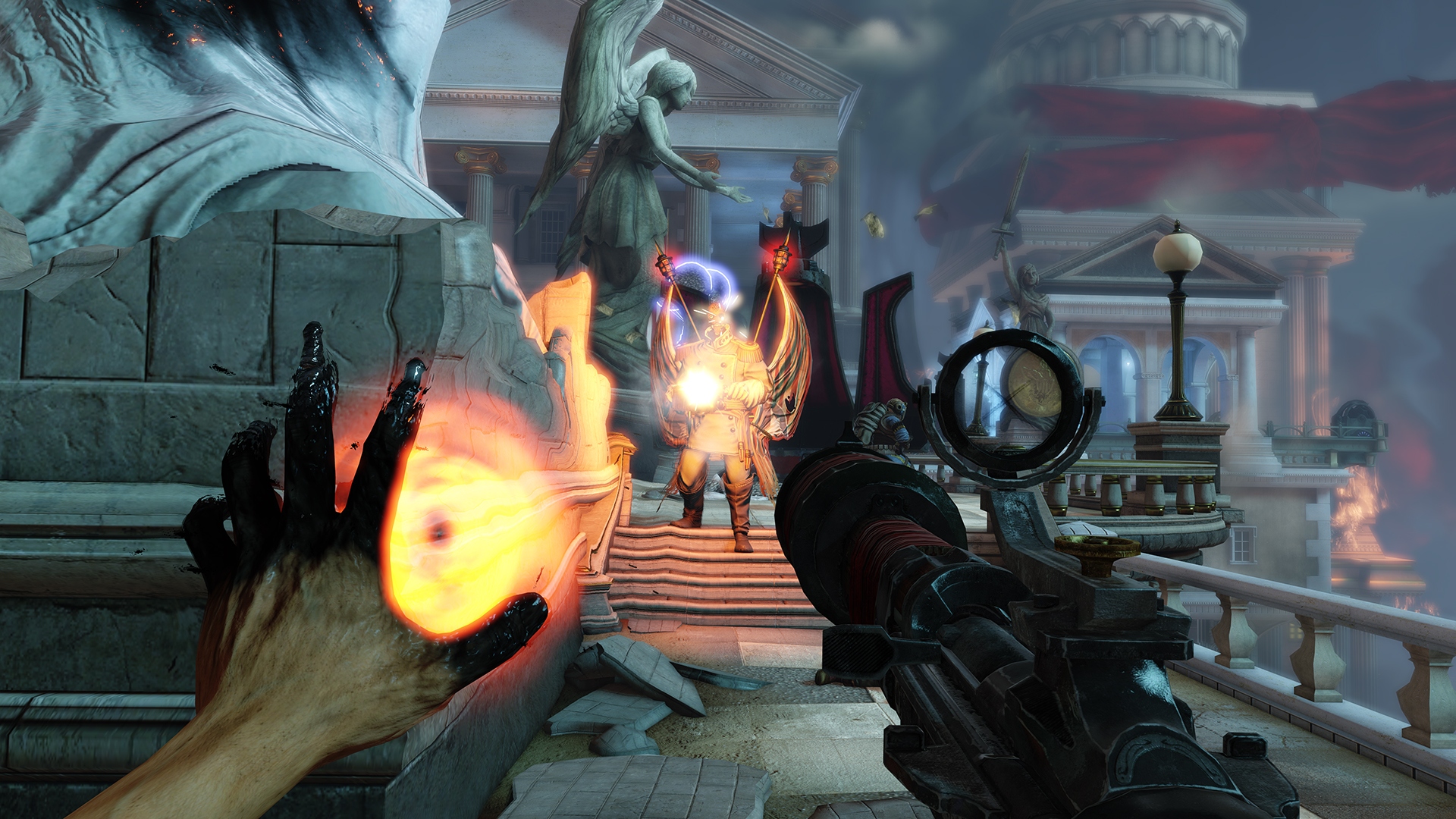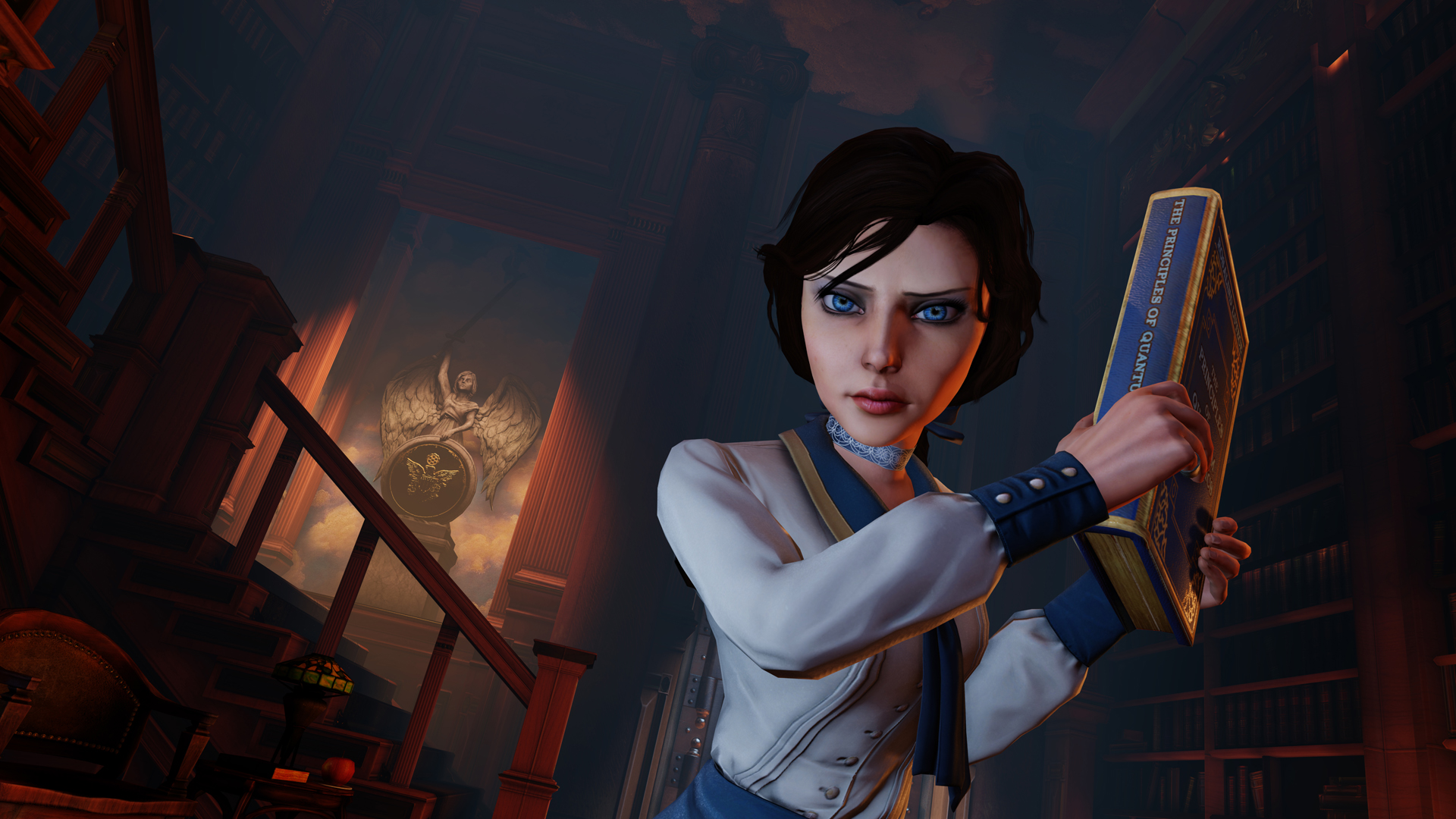After five long years, the sequel to 2K Marin’s critically
acclaimed Bioshock finally sees the light of day. Dubbed originally as the
“thinking man’s shooter”, the original Bioshock was heralded for its
intelligent and mind-bending story, told through its unique setting.
For the sequel to be a success, it needed to best the city of
Rapture of its predecessor. Rapture was a feat of graphical wonderment housing
the brilliant and enigmatic minds of the unforgettable Andrew Ryan and Dr.
Brigid Tenenbaum, resulting in one of the best plot twists in videogame history.
Bioshock Infinite achieves that same level of quality with an
entirely new setting and characters without going on the expense of riding the
original game’s success like Bioshock 2 did. That effort received less than
stellar reviews.
 Taking place in the city of Columbia, you step into the shoes
of Booker DeWitt, a 20th century former soldier and Pinkerton cop
with a deeply troubled past. Crippled with debt caused by a [from his] gambling
addiction, Booker is tasked with travelling to the floating city of Columbia in
search of a special girl named Elizabeth in exchange for his debt.
Taking place in the city of Columbia, you step into the shoes
of Booker DeWitt, a 20th century former soldier and Pinkerton cop
with a deeply troubled past. Crippled with debt caused by a [from his] gambling
addiction, Booker is tasked with travelling to the floating city of Columbia in
search of a special girl named Elizabeth in exchange for his debt.
After a short sequence in the community fair which causes
every single denizen of Columbia to viciously descend upon Booker, you soon discover
Elizabeth and realize that she’s no ordinary girl. Trapped in a tower by the
megalomaniac Father Comstock, apparently gifted with powers of prophecy with a
penchant for destroying the United States, players realize that liberating
Elizabeth and wiping away the debt to be no easy task.
 Amidst all the chaos and beauty of a living, breathing city
in the sky lies a strong undertone of racial bigotry and religious fanaticism. Players
can learn this through scanning the beautiful and well-crafted environment. Hidden
Voxophones act as collectible audio logs that flesh out the backstory of the
escalating tension between Father Comstock’s followers known as the Founder’s
and the ill-treated Irish and Black immigrant rebels known as the Vox Populi.
Amidst all the chaos and beauty of a living, breathing city
in the sky lies a strong undertone of racial bigotry and religious fanaticism. Players
can learn this through scanning the beautiful and well-crafted environment. Hidden
Voxophones act as collectible audio logs that flesh out the backstory of the
escalating tension between Father Comstock’s followers known as the Founder’s
and the ill-treated Irish and Black immigrant rebels known as the Vox Populi.
Gameplay wise, Bioshock Infinite may resemble a traditional FPS
at first glance, it plays almost nothing like what contemporary shooters have
to offer. Booker is given access to a decent range of weapons notably pistols,
shotguns, machineguns and grenade launchers.
However, where Bioshock Infinite truly differs from other
games is the use of its special powers, this time known as Vigors. Similar to
the plasmids of the original Bioshock, Vigors allow Booker to cast a wide
variety of spells towards his opposition like throwing balls of flame, firing
electric bolts or even suspending groups of enemies into the air for an easy
kill.
 Unlike the original Bioshock, Vigors have been made more
accessible and easy to use. Vigors can be casted simply with a click of the
right mouse button or held down longer to be thrown as traps for enemies to
stumble upon. Though some may argue that this limits variety and makes the
Vigors less dynamic than it should be, it also does allow for players to
familiarize themselves with new Vigors much faster. Most intermediate players
will find a combination of Vigors and weapons that suit their needs throughout the
whole campaign without needing to alternate to other Vigors. Advanced players
on the other hand, could find themselves dominating the opposition by firing
off a variety of Vigors and traps using while swapping through sorts of
weapons.
Unlike the original Bioshock, Vigors have been made more
accessible and easy to use. Vigors can be casted simply with a click of the
right mouse button or held down longer to be thrown as traps for enemies to
stumble upon. Though some may argue that this limits variety and makes the
Vigors less dynamic than it should be, it also does allow for players to
familiarize themselves with new Vigors much faster. Most intermediate players
will find a combination of Vigors and weapons that suit their needs throughout the
whole campaign without needing to alternate to other Vigors. Advanced players
on the other hand, could find themselves dominating the opposition by firing
off a variety of Vigors and traps using while swapping through sorts of
weapons.
Like most modern shooters, players are allowed to carry two
different weapons at any given time and alternate between two different Vigors. Like Dishonored, players can access a
Vigor wheel that allows them to select all the different Vigors they’ve come
across along the way. Players can also find and equip up to four pieces of
“Gear” which serves as perks like in recent Call of Duty games.
 Outside of standard shooter elements, Bioshock Infinite
brings something new to the table via the Skyhook sessions. Littered around
certain sections of the game are skylines that attach the various floating
islands together. Upon receiving the skyhook early in the game, players are
allowed to ride these skylines, creating an effective means of travelling and
combat. While riding the skylines, players can easily dismount by pointing
towards where they want to land or better, target enemies and leap towards them
which could either stun them or knock them off the floating islands and to
their doom.
Outside of standard shooter elements, Bioshock Infinite
brings something new to the table via the Skyhook sessions. Littered around
certain sections of the game are skylines that attach the various floating
islands together. Upon receiving the skyhook early in the game, players are
allowed to ride these skylines, creating an effective means of travelling and
combat. While riding the skylines, players can easily dismount by pointing
towards where they want to land or better, target enemies and leap towards them
which could either stun them or knock them off the floating islands and to
their doom.
Elizabeth also brings something to the table with her own
distinctive contribution to gameplay. Throughout the entirety of the campaign,
Elizabeth seldom leaves your side and while in combat, she’ll throw Booker
ammunition, health packs and salts to keep you in the fight. Often Elizabeth
will offer these items at the most important times like when you’re running low
on ammunition or running out of salts to power your Vigors.
Out of combat,
Elizabeth finds and offers the player money while occasionally pointing of items
of interest or even just to strike up a chat, making her the most reliable and
believable companion NPC to date.
Aside from just throwing stuff, Elizabeth also has the
ability to open up “tears” which creates a portal to an alternate reality. How
this comes into gameplay is that Elizabeth can bring in certain things from
other dimensions to the current reality like automated turrets to fight on your
side or even a cache of health packs to keep Booker alive.
While all of these powers may seem game breaking, Bioshock
Infinite isn’t afraid to throw huge numbers of enemies towards you. Unlike the
first Bioshock where enemies rush at you at controlled numbers, Father Comstock
won’t hesitate to unleash dozens upon dozens of enemy waves towards you. While
the Big Daddies from the original Bioshock are absent from Bioshock Infinite,
new special enemies like the Handyman and the Motorized Patriots serve as
challenging and frightening mini-bosses, making their presence felt with high
damage outputs and very high health and armor.
Visually, Bioshock Infinite is one of the most stunning games
in our current console generation. Making up for its lack of photorealistic
graphics, Bioshock Infinite thrives in its surreal and engaging art and
attention to the smallest detail. The city of Columbia feels real and
believable with its floating islands in the distance and population running
around, going about their own personal business.
When the game lets up from its action and allows the player
to walk around the streets unharmed, it’s almost mandatory for players to
explore the city and just watch as how life goes about in the floating city.
Children splashing and playing around a broken fire hydrant while privileged
white adults sit in cafes, gossiping about the immigrant workers who might or
might not be working for the Vox Populi, and billboard and posters encouraging
racial purity, Bioshock Infinite is not so much a game that it to be played but
rather seen and experienced.
Players who just burst through the game, rushing towards the
closest checkpoint to advance the story will find themselves missing out
greatly on what the game has to offer. Without giving away too much, the moment
with the guitar is perhaps one of the most poetic and heartwarming scenes I’ve
experienced in a videogame to date, which makes it scary to think that it
wasn’t part of the main campaign to begin with.
Speaking about guitars, Bioshock Infinite has perhaps one of
the best music scores and audio effects ever produced for a videogame. The
voicework for the characters are downright amazing especially for Elizabeth,
the Letuce twins and Booker DeWitt. An interesting choice was made with Booker
DeWitt’s design to give him a voice and personality, absent in previous
Bioshock games when referring to their protagonists. With the script so well
written and audio executed so perfectly, each collectible Voxophone was worth
far more than standard in-game currency or ammo.
Regardless, the main star of the show is still Elizabeth and
the story of her emancipation from this outwardly bright yet innately dark
world of Columbia and Father Comstock. Wonderfully brought to life by voice
actor Courtnee Draper, Elizabeth is without question easily one of the easiest
characters to emotionally invest in given the believability and uniqueness of
her personality and movement which is seemingly almost early Disney-like in
design.

For those who are more acquainted with movies instead,
Bioshock Infinite in many ways is the perfect hybrid of Disney’s Tangled and
Quentin Tarantino’s latest Django Unchained.
Without padding out this review too much, Bioshock Infinite
is the culmination of what current generation videogames have to offer. If Half
Life 2 was the pioneer of current gen games, Bioshock Infinite with its
marvelous storyline, dynamic characters, gorgeous setting and satisfying
gameplay is the reckoning before the next generation of Watch Dogs and
Battlefield 3 sees release. While the technology in some ways still feels
familiar and plays that way as well, the execution is done to perfection.
While players new to the franchise might find no flaw with
it, advanced players familiar to the Bioshock franchise might find the
experience too forgiving to which I encourage them to start the game on the
hard difficulty like I did. Outside of that little road bump, a few rare bugs
and one or two character models used repeatedly, Bioshock Infinite remains
flawless in its execution.
The campaign is appropriately lengthy at over twenty hours
and while there isn’t a multiplayer component to speak of, there is no way to criticize
this game without nit-picking and sounding like an overly entitled gamer. While
the resolution of the game might appear ambiguous to some similar to Mass
Effect 3’s ending, the sheer amount of artistic vision and complexity to the
game’s finality truly gives meaning to subtitle Infinite.

7 - DIAMOND


No comments:
Post a Comment